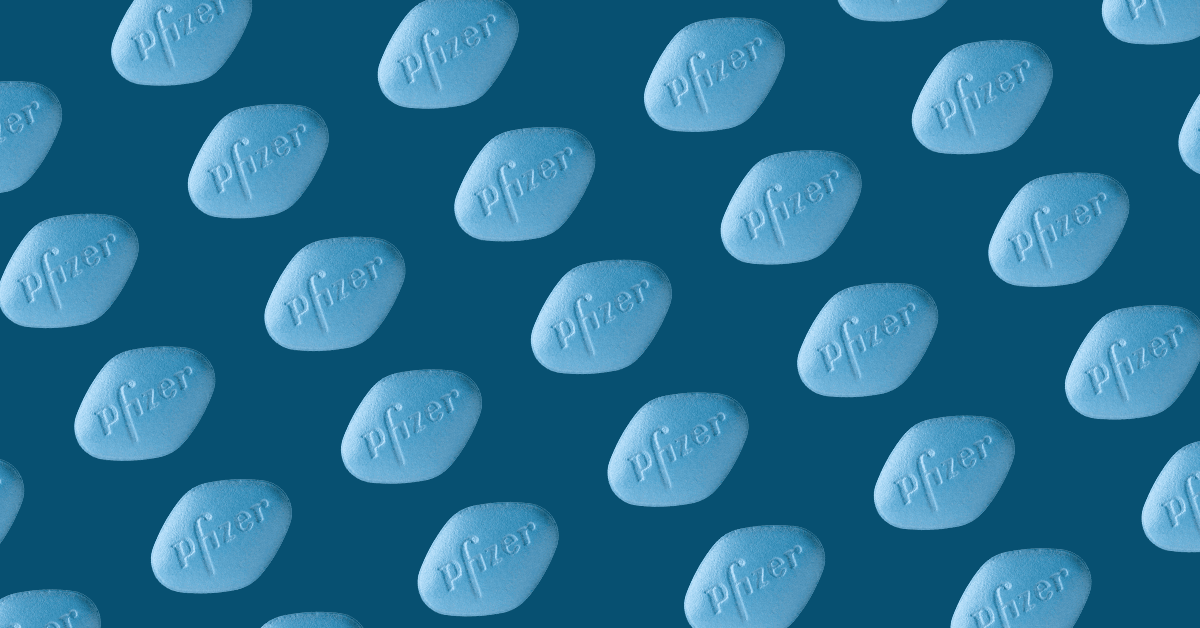Explore Viagra's journey from unexpected discovery to medical breakthrough. Learn how published research underpins pharmaceutical innovation and how you can leverage ACS journals for your breakthroughs.

When Pfizer filed the patent for sildenafil citrate in 1994, they couldn't have predicted the global impact this compound would have. Initially developed as a treatment for hypertension and angina pectoris, sildenafil's path took an unexpected turn during clinical trials when researchers noticed a surprising side effect — improved erectile function. This serendipitous discovery led to the drug's approval by the FDA in 1998 for the treatment of erectile dysfunction (ED), under the brand name Viagra.1
The impact of Viagra has been nothing short of revolutionary. During the drug’s early days, demand was so high that as many as 10,000 prescriptions a day were issued.2 Now, more than 30 years later, over 65 million men worldwide have been prescribed Viagra, with many more buying it over the counter since it was approved as a pharmacy medication in the UK in 2009.3 Its commercial success mirrors its medical importance, with annual sales peaking at $2.05 billion in 2012.4
But Viagra's influence extends beyond ED. In 2005, sildenafil was approved for the treatment of pulmonary arterial hypertension under the brand name Revatio,5 showcasing its versatility as a therapeutic agent.
Groundbreaking discoveries like Viagra, however, don't happen in a vacuum. They're built upon layers of scientific research, often published in academic journals. In the case of sildenafil, this foundation is reflected in the patent's references: among them, only one was a non-patent citation — it was an article from the Journal of Medicinal Chemistry, an American Chemical Society (ACS) journal. This single citation not only demonstrates the importance of peer-reviewed research in drug development, but it also showcases the crucial role that ACS journals play in supporting scientific breakthroughs. The fact that this article was cited in numerous patents further highlights how foundational research published in ACS journals can ripple through the scientific community, spurring innovation and advancing medical progress.

Synthesis and structure-activity relationships of pyrazolo[4,3-d]pyrimidin-7-ones as adenosine receptor antagonists
DOI: 10.1021/jm00384a016
Beyond Viagra: Shaping the future of science
The Viagra story illustrates how published research can help lead to life-changing medications. As a pharmaceutical researcher, you're likely driven by the same goal: to develop treatments that improve people's lives. ACS journals can be a powerful ally in this mission, offering you access to cutting-edge research across the entire drug discovery pipeline.
Whether you're exploring AI-driven drug design, investigating novel PROTAC approaches, delving into cryo-EM for structure-based drug discovery, or advancing organoid models for disease research, ACS Publications ensures you have the information you need across biological chemistry, medicinal chemistry, and more with titles including:
- Journal of Medicinal Chemistry
- ACS Infectious Diseases
- ACS Medicinal Chemistry Letters
- ACS Pharmacology and Translational Science
- Chemical Research in Toxicology
- Molecular Pharmaceutics
By engaging with ACS journals, you're connecting with a global community of scientists tackling similar challenges. Reading the latest findings can spark new ideas, inform your methodologies, and help you avoid pitfalls. From elucidating new drug targets to developing novel synthesis methods, the research in ACS journals consistently drives innovation in pharmaceutical science.
Behind every medical breakthrough, there's a foundation of rigorous research and scientific exchange. By regularly engaging with ACS journals, you're staying at the forefront of potential solutions—the knowledge you gain could be key to your next breakthrough.
In the end, the story of Viagra reminds us of the power of shared knowledge. By leveraging ACS journals in your work—through reading, referencing, and publishing—you're participating in the next chapter of pharmaceutical breakthroughs. Join us in this exciting journey of discovery and innovation.
References
- Food And Drug Administration. "FDA Approves Impotence Pill, Viagra." ScienceDaily. ScienceDaily, 1 April 1998. www.sciencedaily.com/releases/1998/04/980401074901.htm.
- Handy, Bruce. "The Viagra Craze." Time, 4 May 1998, pp. 50-57. https://time.com/archive/6732703/the-viagra-craze/.
- Connelly, Dawn. "Three decades of Viagra."The Pharmaceutical Journal, PJ, May, Vol 298, No 7901;298(7901):DOI:10.1211/PJ.2017.20202847. https://pharmaceutical-journal.com/article/infographics/three-decades-of-viagra.
- "Worldwide Revenue of Pfizer's Viagra from 2003 to 2019." Statista, 2024. www.statista.com/statistics/264827/pfizers-worldwide-viagra-revenue-since-2003/.
- "Revatio FDA Approval History." Drugs.Com, 2024. www.drugs.com/history/revatio.html.
